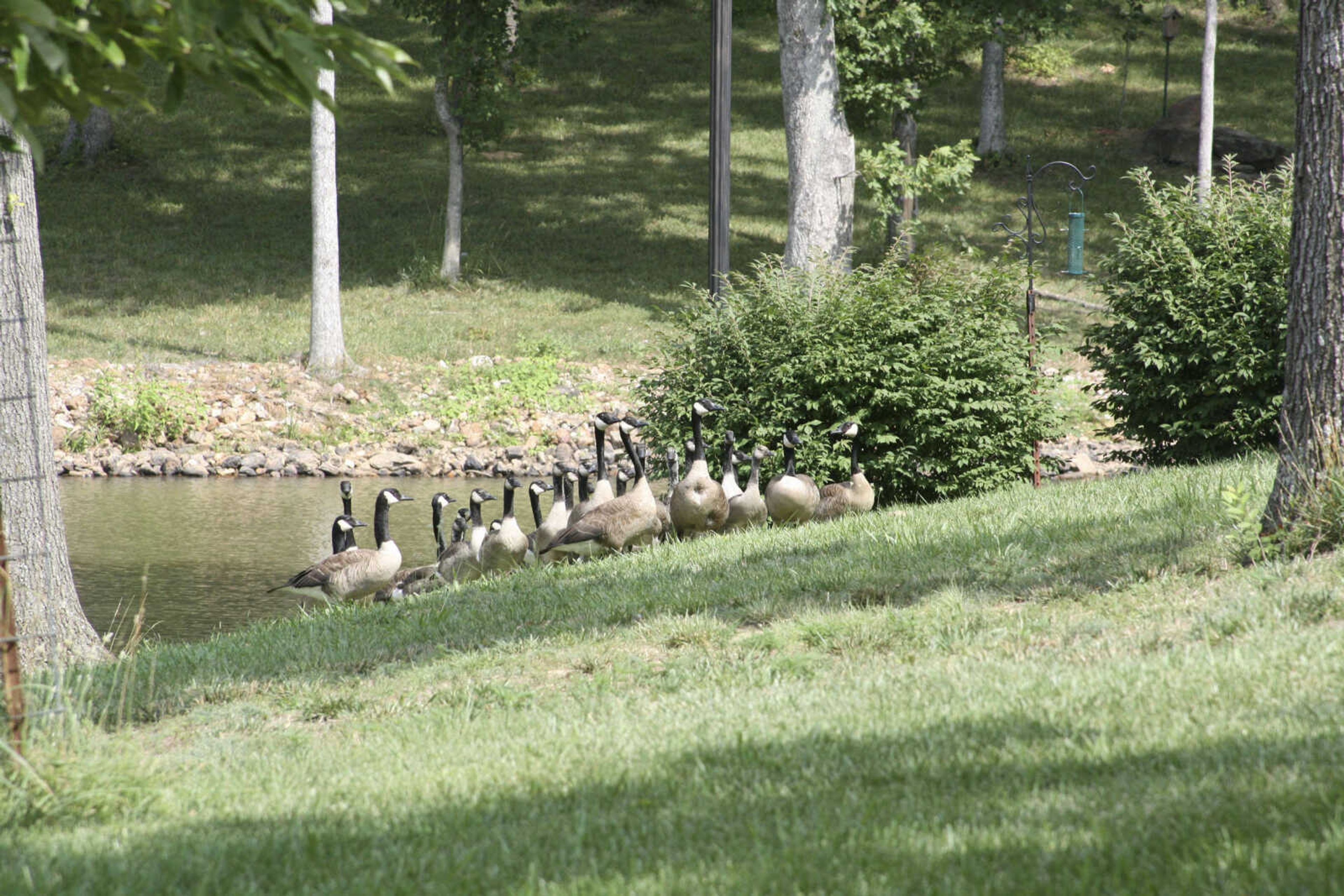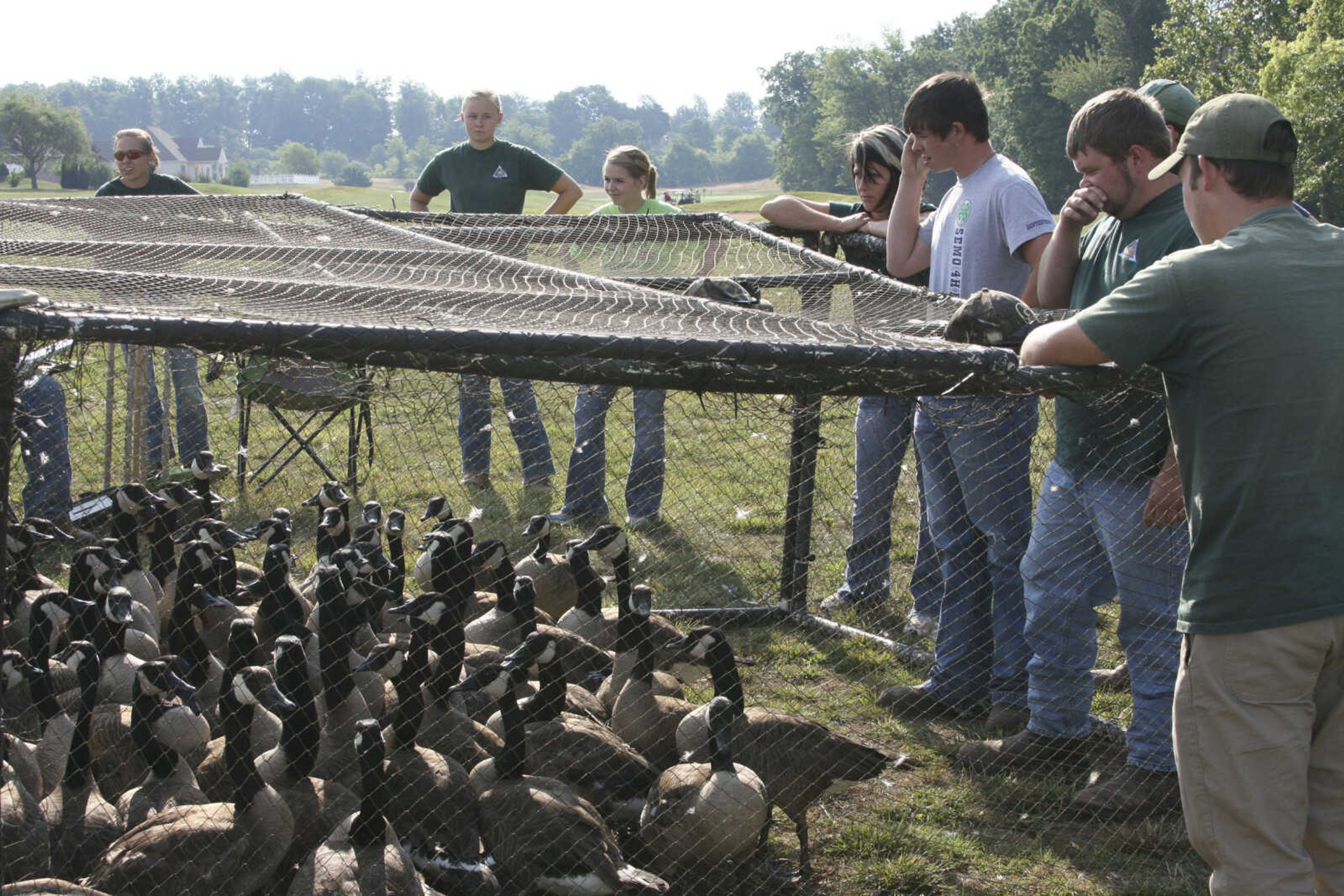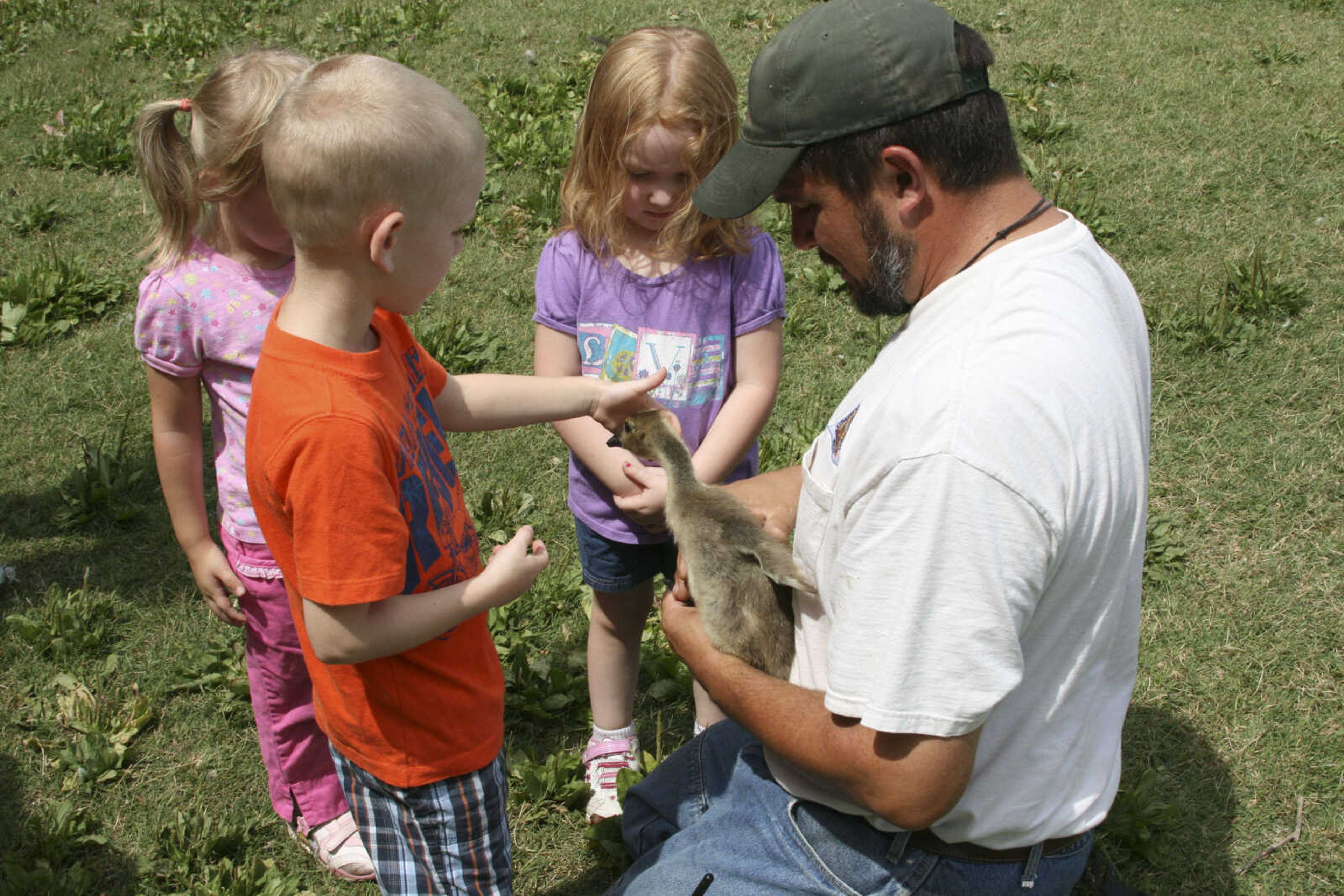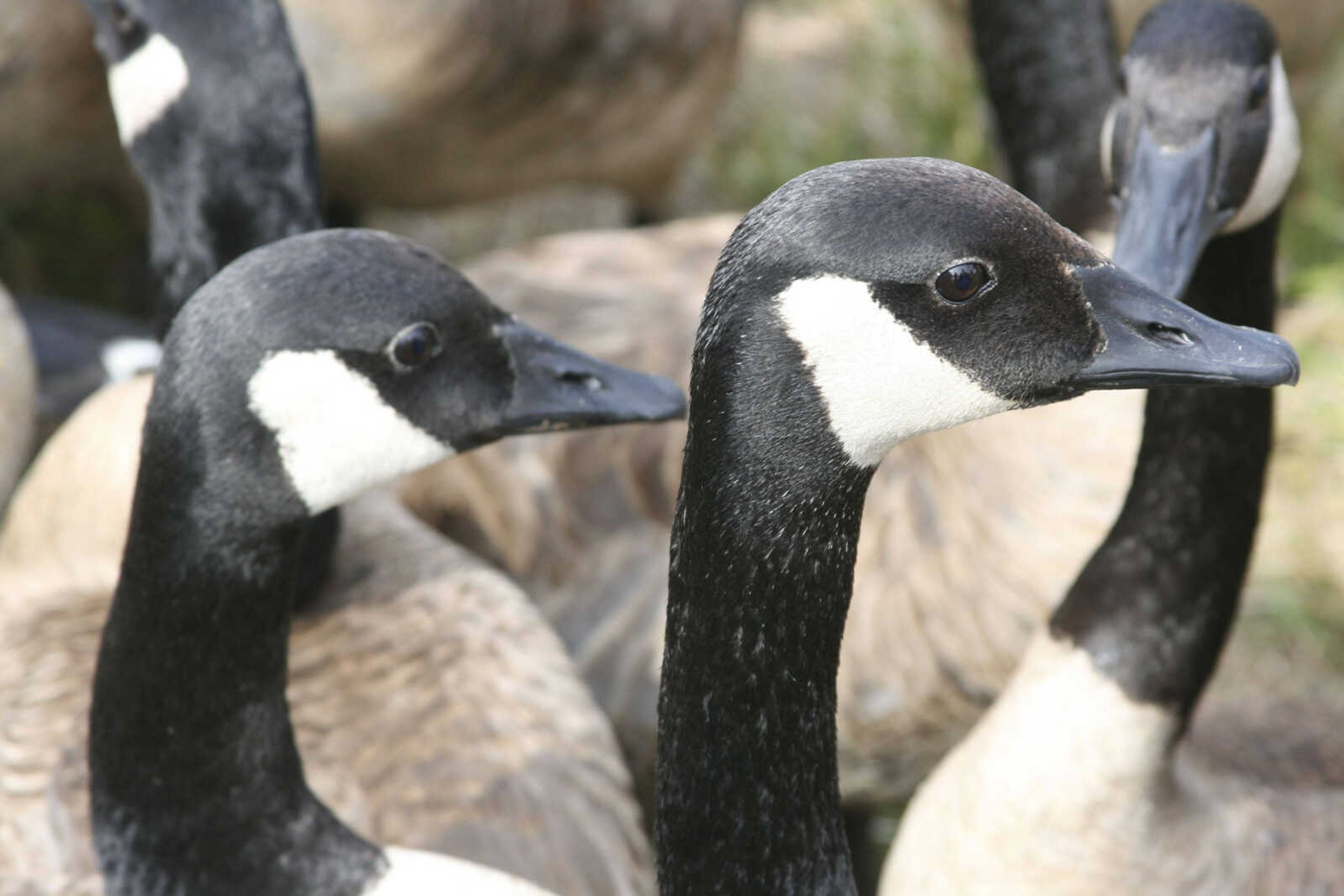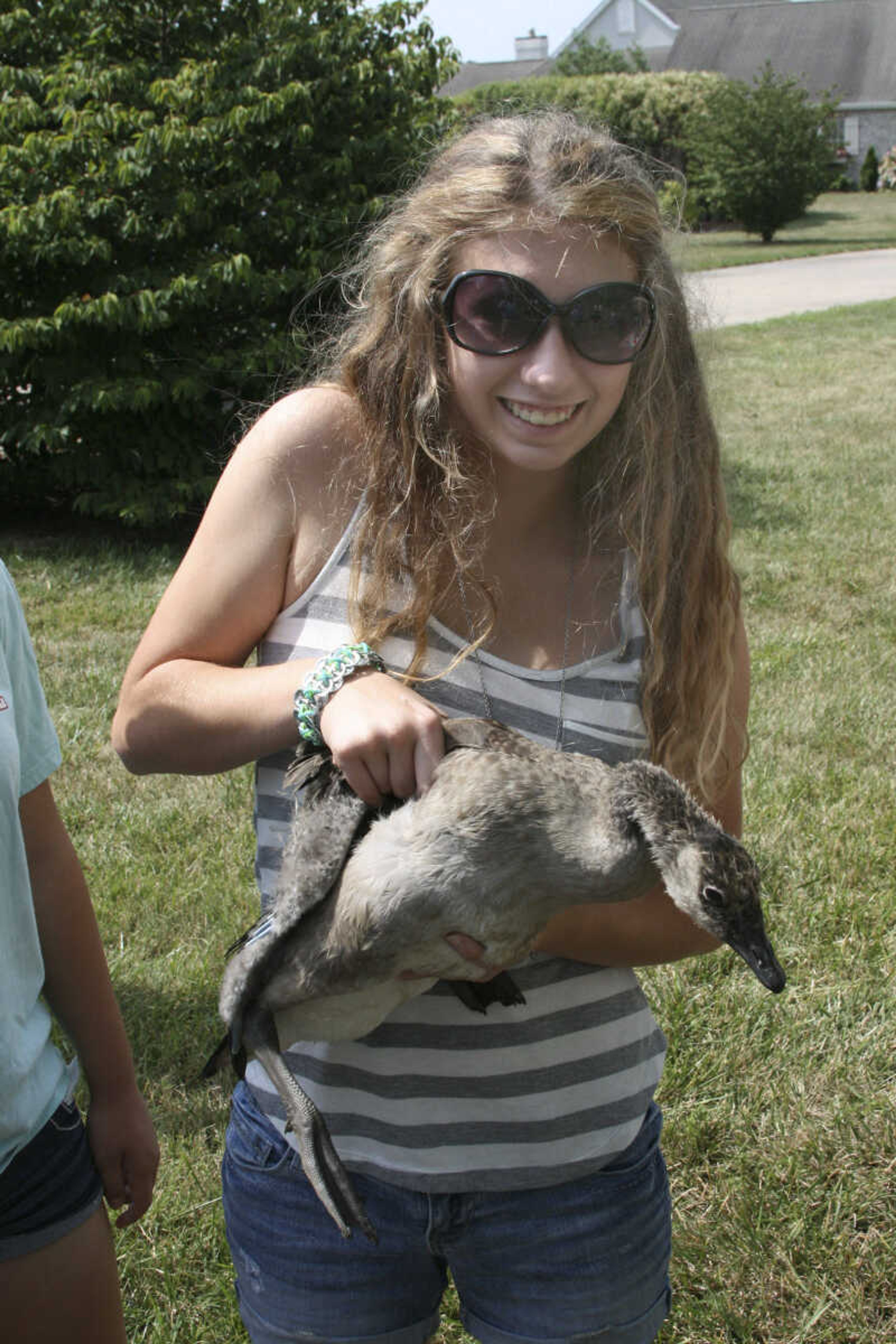It was a loud scene Thursday, June 20, as Missouri Department of Conservation employees gathered gaggles of geese in Cape Girardeau County. More than twenty biologists, resource assistants and interns met at Capaha Park, Cape County Park, Rotary Lake in Jackson and the Bent Creek Area to place waterfowl identification bands on Canada geese. Onlookers at the city parks were able to take part in the exercise and even hold some of the geese for the biologists. This is the second year in a row the Department of Conservation has banded geese in Cape Girardeau County, with a purpose to collect population data and learn how and where the geese migrate year to year. Biologists use the data to measure the birds' movements, as well as mortality, reproduction, harvest and survival rates. The information is used to adapt the management of Canada geese. The MDC plans to recapture the geese each year to record the data and band any new geese. Each goose was released at the same area where it was captured. Though they ruffled their feathers and cackled at the biologists, each was returned to its area safe and sound. The department also banded geese earlier this week at Wappapello Lake and Clearwater Lake. Next week, the biologists will gather geese at Otter Slough Conservation Area, and parks in and around Dexter, Malden and Charleston. For more information on waterfowl bands, check out the official U.S. Geological Survey website <http://www.pwrc.usgs.gov/bbl/homepage/call800.htm> or go online to the Missouri Department of Conservation at www.mdc.mo.gov. For more information on this goose banding event, contact the MDC's Southeast Regional Office.
Connect with the Southeast Missourian Newsroom:
For corrections to this story or other insights for the editor, click here. To submit a letter to the editor, click here. To learn about the Southeast Missourian’s AI Policy, click here.


